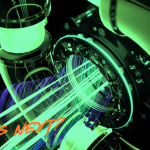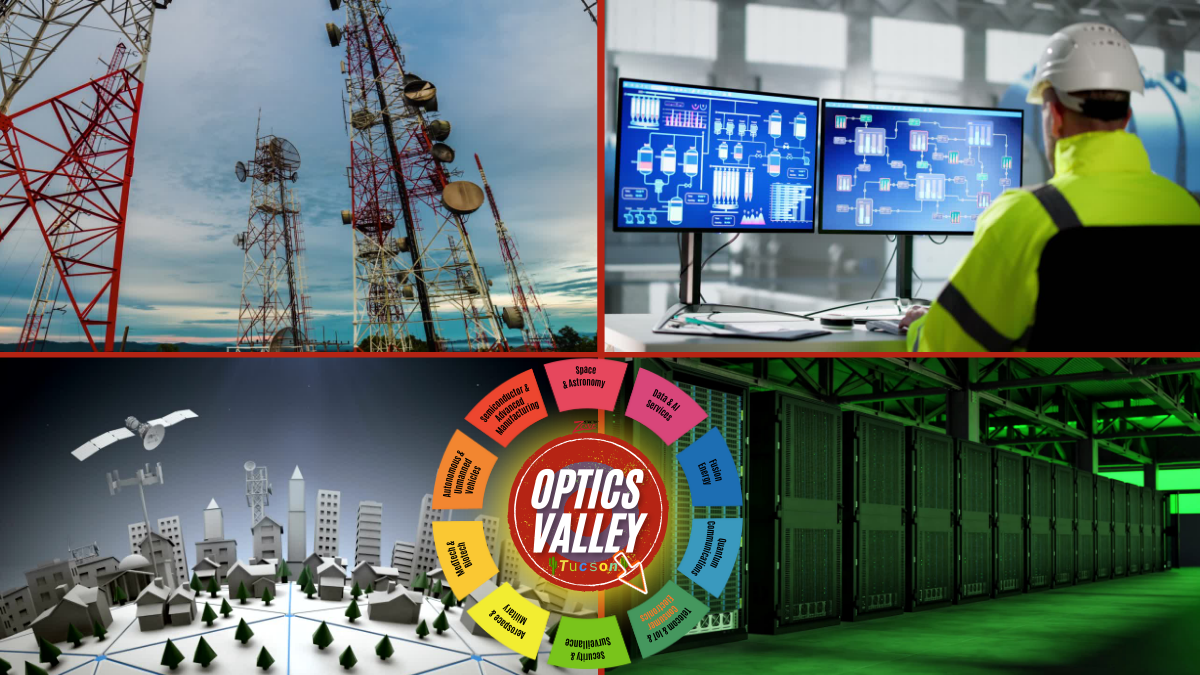Light That Connects the World
Optics and Photonics in IoT, Telecom, and Communications
We often picture towers, antennas, or satellites when we think of the internet, smartphones, or smart home devices. But behind the scenes, light controlled, guided, and transformed through optics and photonics makes nearly all this possible. From tiny sensors in everyday devices to massive fiber optic cables crossing the oceans, optics and photonics power the Internet of Things (IoT), telecom networks, and advanced communications systems.
Let’s explain how these technologies work together and why they are essential.
The Backbone of Modern Communication: Light in Motion
At its core, communication is about moving information. In the digital world, that means moving data at incredibly high speeds and with very low errors. Electrical signals once dominated, but engineers turned to light as demand for faster and larger networks grew.
Why? Light can carry much more information than electricity. A single optical fiber can transmit terabits of data per second, enough to simultaneously support millions of phone calls or video streams. We are relying more and more on these technologies as processing speeds and demand grow with AI.
Core Tools:
- Optical fibers: Thin strands of glass that guide light with very little loss.
- Semiconductor lasers: Sources that send light into fibers.
- Photodetectors (PIN diodes, avalanche photodiodes, SPADs): Convert light back into electrical signals.
- Photonic integrated circuits (PICs): Tiny chips that route, modulate, and process light signals like electronic circuits process electricity.
This combination makes modern telecom and IoT possible.
Optics in the Internet of Things (IoT)
IoT connects billions of physical objects from smart thermostats to industrial machines to SCADA and the internet. Optics and photonics show up in two significant ways: sensing and communication.
Sensing the World
Many IoT devices use light to measure and monitor their surroundings:
- LIDAR (Light Detection and Ranging) helps self-driving cars detect obstacles.
- Spectroscopy sensors analyze soil for smart agriculture or detect environmental chemicals.
- Optical biosensors track glucose levels or heart rates in wearable health tech.
- Fiber Bragg Grating (FBG) sensors measure stress and strain in bridges, pipelines, and buildings, making smart infrastructure possible.
Communicating Data
For IoT devices, moving information efficiently is key. Photonics plays a role here, too:
- Short-range free-space optical links allow devices to talk without wires, especially in harsh or remote environments.
- Integrated photonics reduces power use and device size, making sensors more efficient at the network edge.
Without optics, IoT would be slower, bulkier, and less reliable.
Telecom: The Global Highway for Data
Telecom is the nervous system of our connected world. Almost every phone call, email, video, or data transfer eventually runs through fiber optic networks.
Fiber Optic Communication
- Dense Wavelength Division Multiplexing (DWDM): Multiple wavelengths of light share the same fiber, multiplying capacity.
- Coherent optical transmission: Improves how much data can be squeezed into each wavelength.
- Optical amplifiers: Erbium-Doped Fiber Amplifiers (EDFAs) and Raman amplifiers boost signals without converting them into electricity.
Together, these allow global networks to run at speeds once thought impossible.
5G and Beyond
5G isn’t just about faster smartphones; it’s about enabling billions of IoT devices and real-time applications. Photonics supports this through:
- Optical fronthaul/backhaul: Fiber connects dense networks of small cell towers to the internet core.
- Radio-over-Fiber (RoF): RF signals travel over fiber, enabling ultra-dense networks.
- Integration with millimeter-wave and THz bands: Optical links provide the backbone while wireless connects the last mile.
Submarine and Satellite Systems
Over 95% of international internet traffic runs through submarine fiber optic cables, linking continents. Meanwhile, satellites increasingly use laser links for high-speed inter-satellite communication, reducing reliance on slower radio systems.
Beyond Today: Next-Generation Communications
Photonics is not just keeping up with demand; it’s shaping the future of communications.
Free-Space Optical (FSO) Communications
Instead of sending light through fiber, FSO uses air or space as the medium. This enables:
- Line-of-sight links between buildings.
- High-speed connections for drones, airplanes, or satellites.
- Quick deployment where fiber is impractical.
Quantum Communications
The future of secure communication may rely on quantum optics. Using single-photon sources, superconducting nanowire detectors, and entanglement distribution, quantum communications enable Quantum Key Distribution (QKD), making eavesdropping nearly impossible.
Data Centers and Cloud Computing
With AI and cloud services demanding more bandwidth, silicon photonics is revolutionizing data centers. By shrinking optical interconnects onto chips, engineers can cut energy use, speed up transfers, and handle massive data loads.
Optical Switching and Dynamic Networks
Networks of the future will need to shift bandwidth instantly. Optical switches using MEMS mirrors or liquid crystal devices allow data streams to be rerouted in microseconds, supporting IoT’s unpredictable traffic patterns.
Enabling Photonics Technologies
Several photonic building blocks show up across IoT, telecom, and communications:
- Laser diodes: Core light sources for transmitters and sensors.
- VCSELs (Vertical-Cavity Surface-Emitting Lasers): Used in short-range communications, like inside data centers or IoT interconnects.
- Photonic crystal fibers: Special fibers for high-power delivery and sensing.
- Nonlinear optics: Generate supercontinuum light for spectroscopy in IoT applications.
- Metamaterials and nanophotonics: Next-gen antennas, modulators, and ultra-compact sensors.
Why This Matters
Think of optics and photonics as the hidden layer that makes our connected lives possible. Without them:
- IoT couldn’t gather data fast enough.
- Telecom couldn’t handle the world’s traffic.
- Communications wouldn’t be secure or scalable.
Light is not just faster, it’s more efficient, more flexible, and future-proof.
Timeline to the Future
- Now (2025): Fiber optics and DWDM carry global internet traffic. IoT sensors use photonics for health, cities, and industry.
- Near-Term (2025–2030): Mass adoption of silicon photonics in data centers; IoT edge devices integrate more photonic chips; quantum key distribution pilots scale globally.
- Mid-Term (2030–204?): Quantum communications will likely merge with classical networks; widespread free-space optical networks link ground-to-air-to-space.
- Far Future (2040 and beyond): Fully photonic networks with ultra-low latency, massive capacity, and quantum-level security power an internet that feels instantaneous and unbreakable.
Closing Thought
When you send a text, stream a movie, or check your health on a smartwatch, you’re relying on photons, tiny packets of light working silently behind the scenes. From sensing in IoT devices to carrying entire nations’ worth of data across oceans, optics and photonics aren’t just supporting the communications revolution. They are the revolution.








